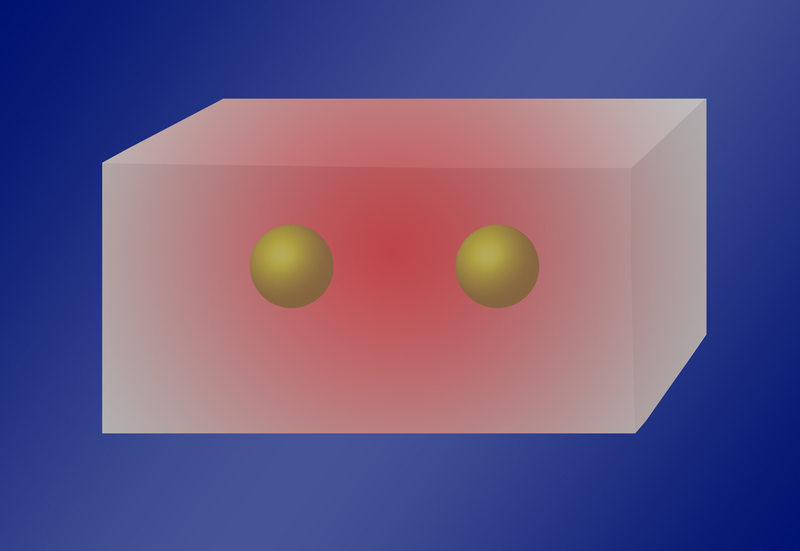Two Atoms Can Jointly Absorb One Photon
How many photons does it take to light up an atom? Researchers have shown theoretically that it’s possible to excite two atoms—or even more—simultaneously by absorbing just a single photon between them. The process should be reversible, so that the atoms can return to a lower-energy state by collectively emitting one photon. This nonintuitive phenomenon might find applications in quantum information processing, the researchers say.
Excitation of a single atom by the absorption of two photons is a well-known process. Together the photons convey enough energy to boost the atom from a lower-energy state to a higher-energy state, even without an intermediate rung of the energy ladder. This two-photon absorption is now commonly used in spectroscopy and microscopy, while double emission of photons by an excited atom is a standard way to make so-called entangled photons, which have interdependent quantum states.
But Salvatore Savasta of the University of Messina in Italy and his co-workers wondered about the complementary processes—double-atom absorption and emission of a single photon. They considered a simple system in which two identical atoms are placed inside an optical cavity, a space that can support standing waves of light. The cavity's dimensions determine the specific wavelength and frequency of photons that it can accommodate.
According to the calculations of Savasta and colleagues, if this resonant frequency of the cavity is twice the frequency of a photon that could boost either of these atoms from its ground state to an excited state, then the phenomenon can occur. A photon in the cavity can be simultaneously absorbed by both atoms at once, each atom taking half of the photon’s energy and both ending up in the excited state. The same holds, the researchers say, for three atoms with transition frequencies a third of that of the cavity resonance.
The team found that, in effect, the system briefly “borrows” a second photon from chance fluctuations in the vacuum within the cavity. Such “virtual” photons pop in and out of existence all the time. The two atoms and the single real photon become entangled in a three-particle quantum state. Then, with the aid of a virtual photon, this three-particle system can attain a quantum state that is a combination of two situations: (1) both atoms in their ground states with a real photon in the cavity and (2) the two atoms in their excited states with no real photon present. The system can then emerge from this blend of states purely in the latter one.
Quantum states in which more than two particles are entangled have been proposed as elements for quantum cryptography and quantum computation. A process like the double excitation with one photon could be used to make such states, says Savasta. The photon could be used to carry information from two stationary quantum bits (the two atoms) to other quantum bits in a device.
“I have not heard about such an idea before and find it surprising,” says Tatjana Wilk of the Max Planck Institute for Quantum Optics in Garching, Germany. However, she is doubtful that the effect would be useful for quantum information processing because the excited states might not persist long enough for a device to make use of the information encoded in the atomic states.
Savasta and his colleagues think that the best chance to observe their predicted phenomenon would be with “artificial atoms” made from superconducting materials, in which the electric current has discrete energy levels like those of real atoms. He says that such systems have already been shown to persist in states stable enough to support quantum computation. “I would be thrilled if this effect could be observed in an experiment,” says Wilk.
This research is published in Physical Review Letters.
–Philip Ball
Philip Ball is a freelance science writer in London. His latest book is How Life Works (Picador, 2024).





